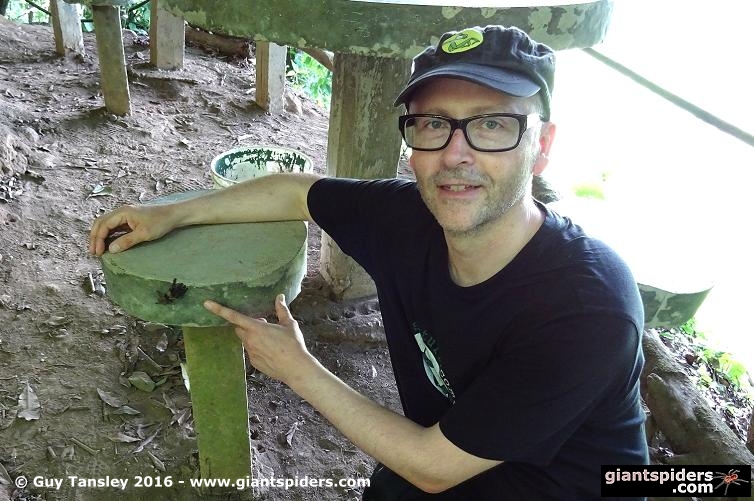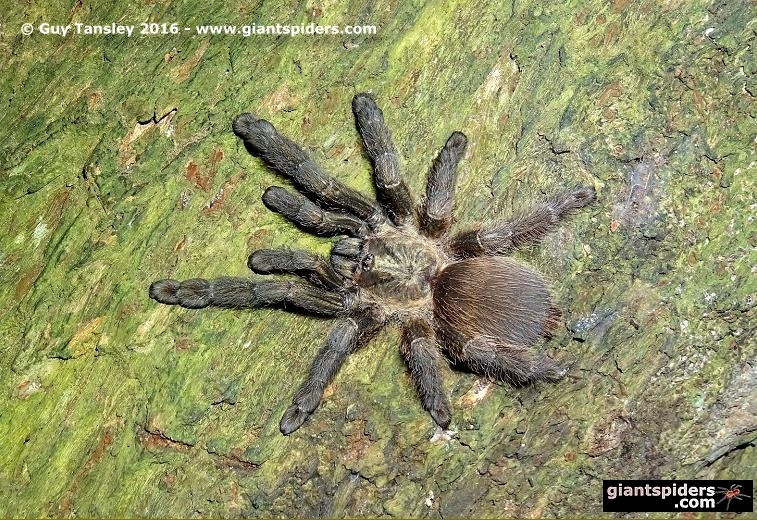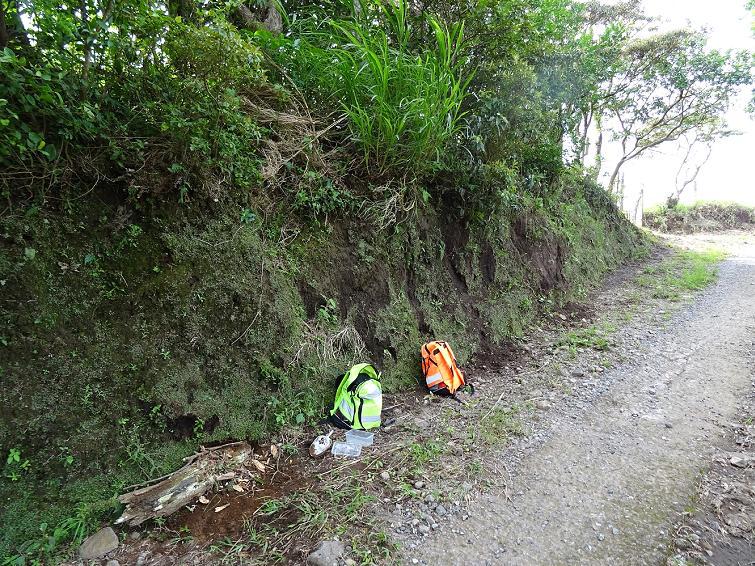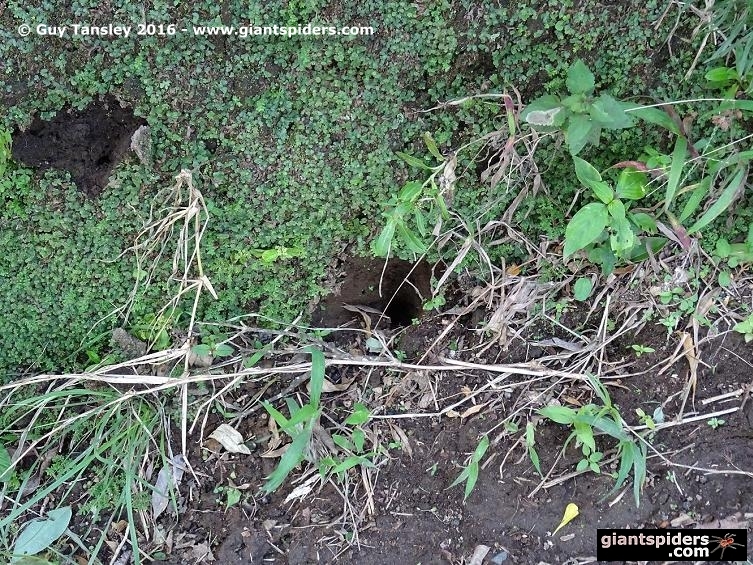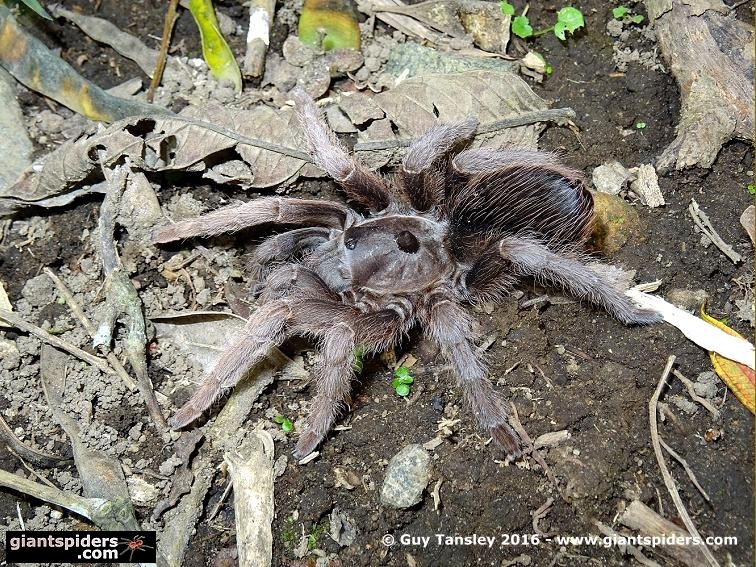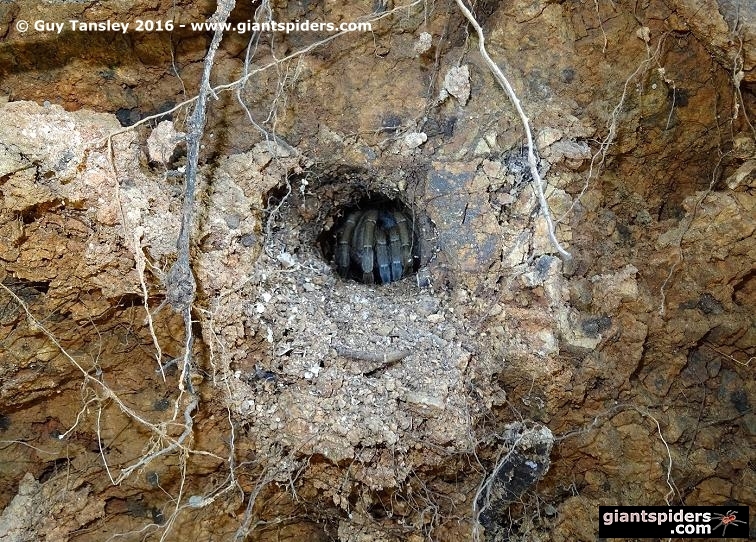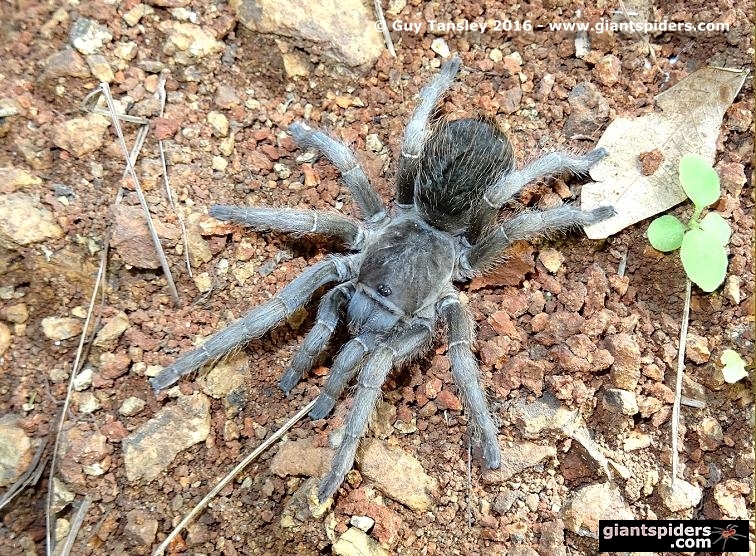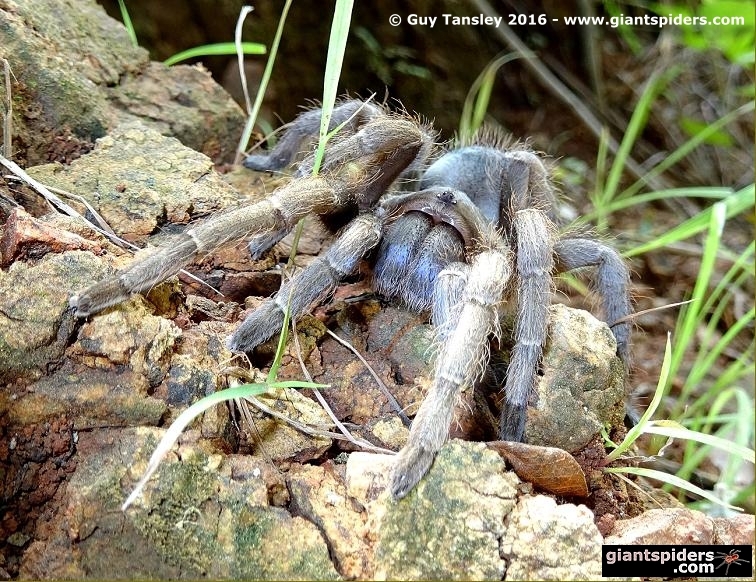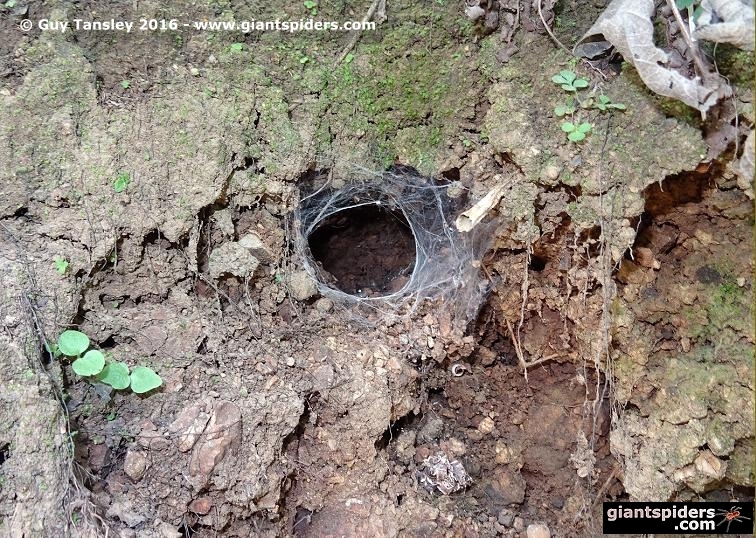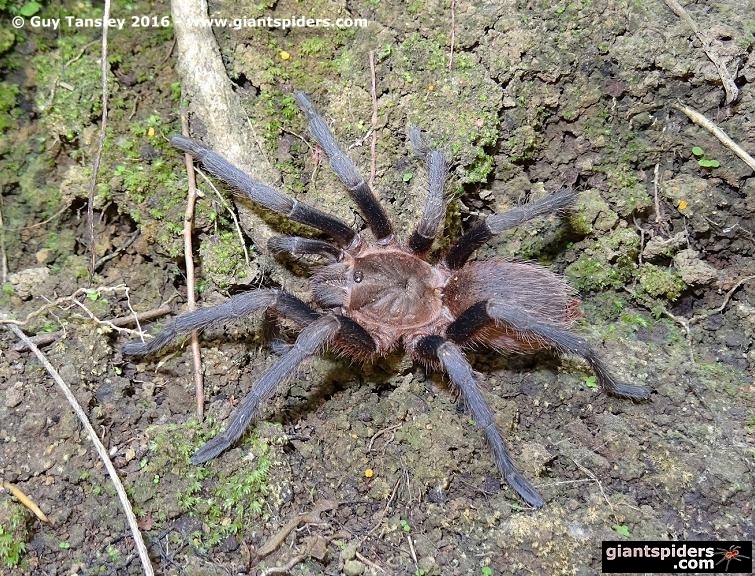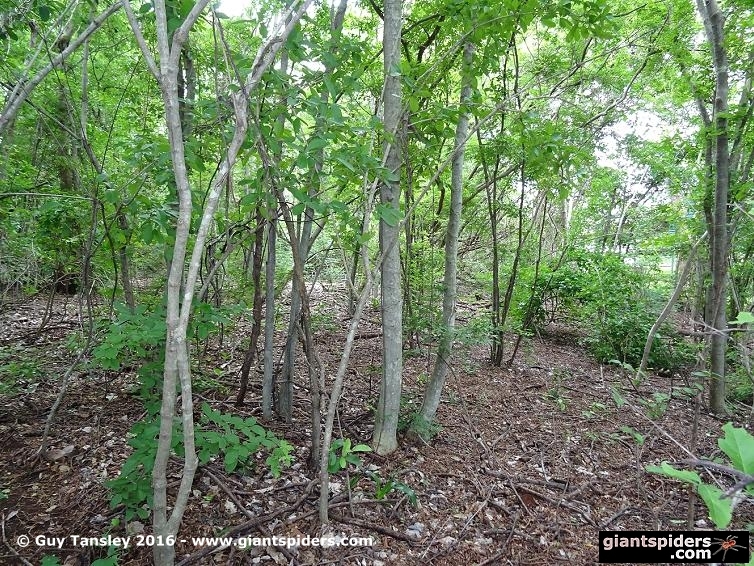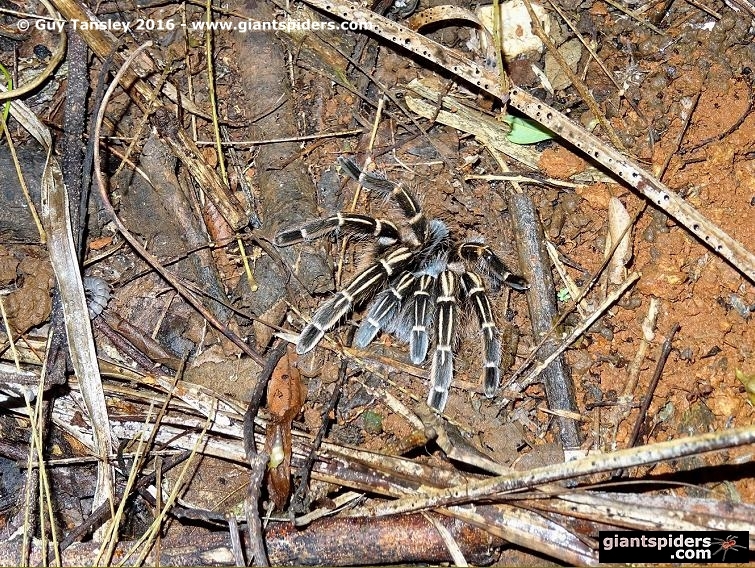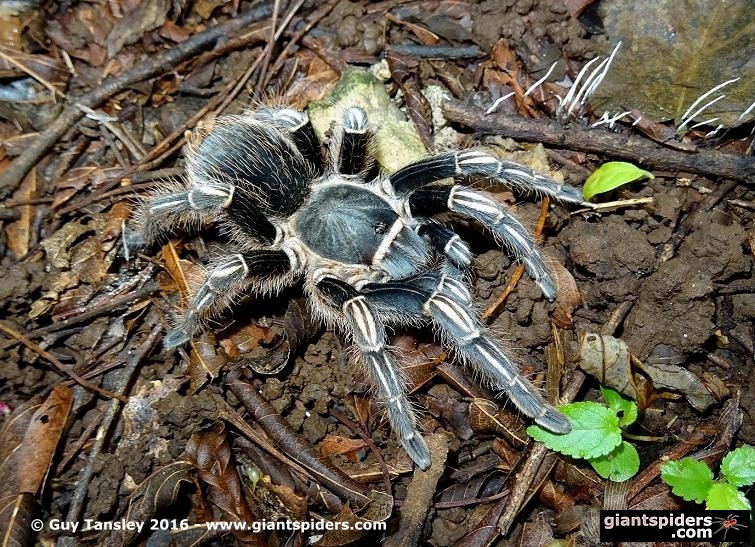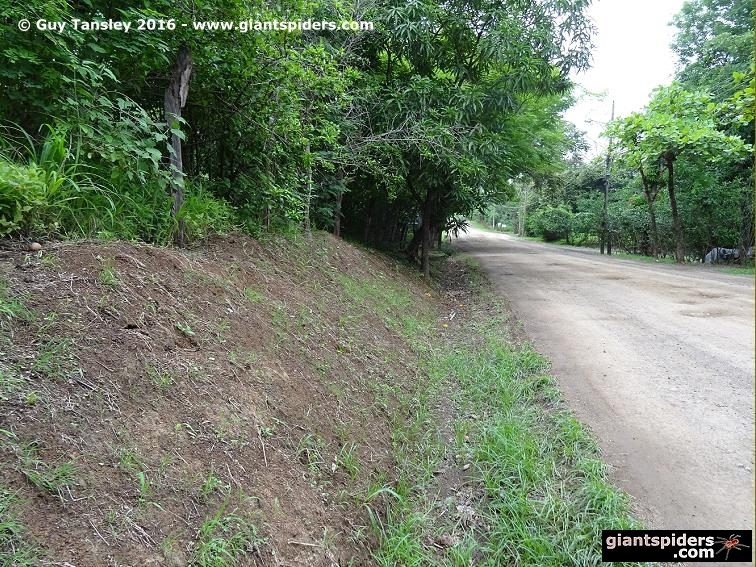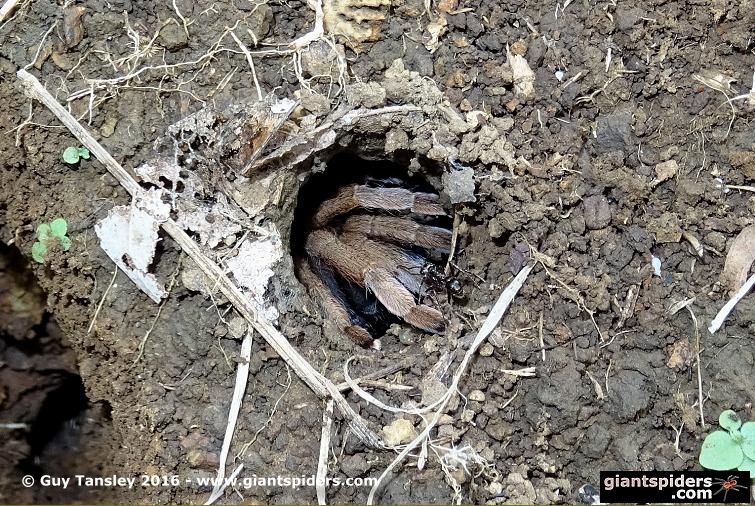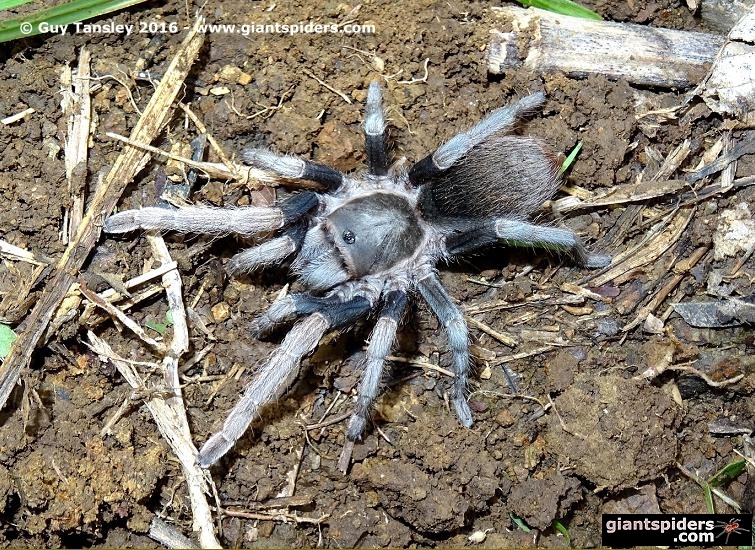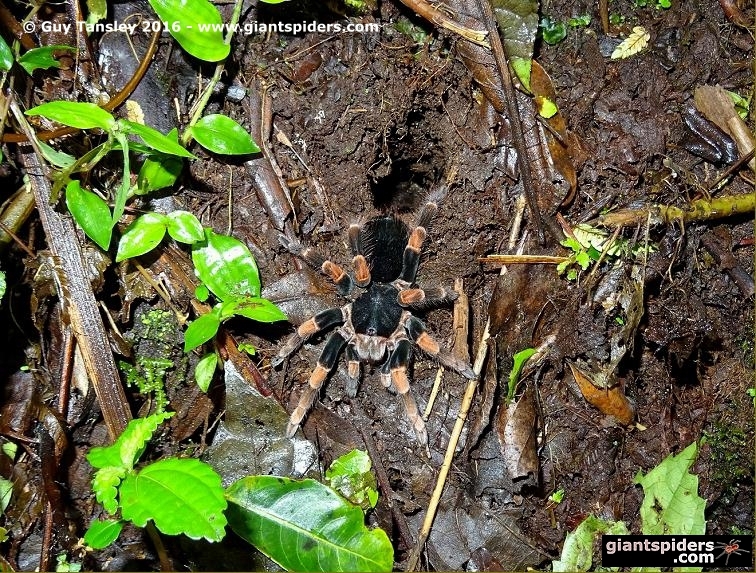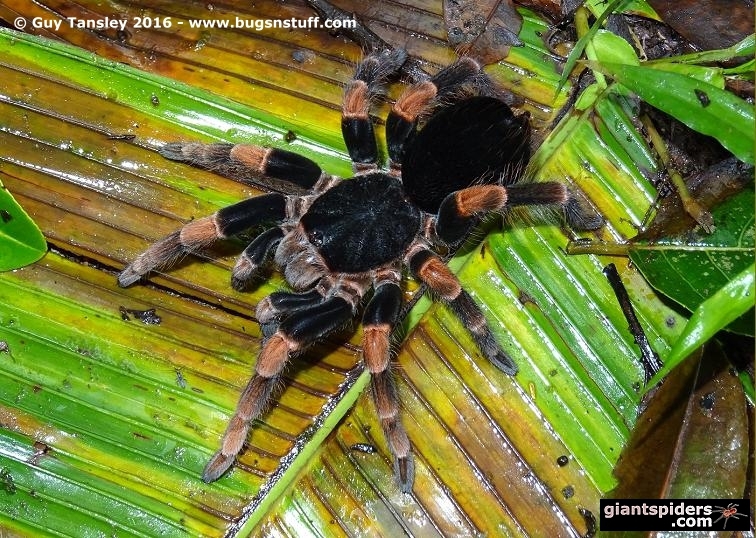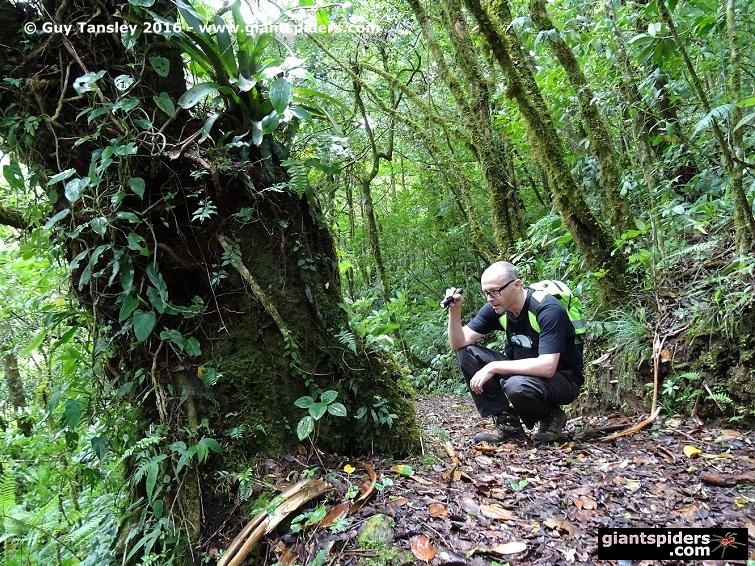
Tarantulas of Costa Rica
Guy Tansley
During July 2016, my wife Jude and I travelled to Costa Rica for a two week honeymoon. We were married July 2015, but it
took us a while to get sorted!
Having been on a fair few research trips with old friends including Andrew Smith, Paul and Mark Carpenter, Michael Jacobi and Ralf Konen, it was safe to say that while this was a honeymoon,
tarantulas would be on the agenda. Jude realised this too, or at least she did once she saw my map with location data.
July in Costa Rica is the 'green season', which basically means the wet season. To be honest, my first impressions of Costa Rica were a little concerning; only remnant patches of forest remain
between the ever growing populated areas of farms and towns. Nevertheless, there was still plenty of wildlife to see and photograph. Costa Rica values its tourism and therefore do their best to
strike a fine balance between development and conservation, and succeed fairly well. Having only twenty percent of its forests remaining is a depressing statistic, but ancient woodland covers only
about two per cent of the UK, so compared to us they're doing well. An article on the wildlife of this amazing country could fill a Journal on its own, so we'll
focus on the tarantulas I photographed of the many found in Costa Rica. During the fifteen days Jude and I were in country, I found nine species. However, as no spiders were brought home to confirm
their identification, this article will cover the seven that were actually photographed.
Psalmopoeus cf. reduncus: I knew this species
could be found in Costa Rica (Eddy Hijmensen, pers. comm.), but it was the species I thought least likely to encounter, and I was surprised to find one without much effort! In the days before
finding P. cf. reduncus, I had found several burrows on our drive from region
to region, and even tickled a couple of the inhabitants out. However, as time was against us (well, against me!), I didn't get good photos as they proved difficult to extract with any ease. As is
always the way when searching for tarantulas, luck has a lot to do with success, or, as Jude put it, "there's a lot of luck but also a lot of looking!" And so it was that while visiting one of the
many beautiful waterfalls throughout Costa Rica, sitting right there on the trail path, in plain sight on a public seat, was a small adult
female P. cf. reduncus! A great
'find'!
P. cf. reduncus patiently waiting for me of the forest trail.
Sphaerobothria hoffmanni: This species is a Costa Rican classic. I found a few of these, but only extracted one for photographs. This one was found at the same site as the P. reduncus. S. hoffmanni is one of the few tarantulas in the
world with a foveal protuberance.
Sphaerobothria hoffmanni habitat.
Sphaerobothria hoffmanni burrow.
Adult female Sphaerobothria hoffmanni
Stichoplastoris sp.: We found an adult female in the hills behind a beach on the Pacific coast. It lived in a very shallow burrow and was easily extracted for photos. The spider had a distinct blue sheen to the chelicerae.
Stichoplastoris sp. in burrow
Stichoplastoris sp. adult female.
Stichoplastoris sp. chelicerae showing blue sheen.
Aphonopelma crinirufum: The illustrated specimen was a probable sub-adult male, and was found in the same habitat and embankment s as Stichoplastoris sp. There was much more silk around the entrance, and its burrow had both a main entrance and a smaller exit hole located nearby.
Aphonopelma crinirufum burrow.
Aphonopelma crinirufum adult female.
Aphonopelma seemanni: This "stripe-kneed" tarantula is another Costa Rican classic. The hotel we stayed at on the Pacific coast had burrows in the gardens - lots of burrows! I stopped counting at thirty. Many burrows had spiders at their entrance even during the daytime. We found even more burrows in the embankments on the unpaved roads as well. This is a very prolific species.
Aphonopelma seemanni habitat.
Aphonopelma seemanni at burrow entrance.
Aphonopelma seemanni adult female.
Unidentified species: Although this species appears to be what is considered Brachypelma fossorium, its nomenclature will be revised soon (S. Longhorn, pers. comm.). It was found in the same embankments as A. seemanni. Its slightly different burrows incorporate more grass and leaves than A. seemanni, and the burrow entrance is small compared to the size of the actual spider inside.
Unidentified sp. habitat (shared with A. seemanni).
Unidentified sp. at burrow entrance.
Unidentified sp. adult female.
Megaphobema mesomelas: This is Costa Rica's most famous and attractive species. It is found in the high altitude cloud forests, and prefers much lower temperatures and very high humidity. Everyone that visits the Monteverde region will probably see this spider as it is a popular spider to show tourists, especially on night walks through forest reserves.
Megaphobema mesomelas outside her burrow.
Megaphobema mesomelas adult female.
The author in Megaphobema mesomelas habitat.
